It feels rather ironic to be interviewing Denzil Forrester about his work in the midst of the coronavirus crisis. We’re communicating by video call, of course – Forrester in his home in Cornwall, me in London, unable to meet in person because of the rules around social distancing and self-isolating; yet most of Forrester’s paintings convey a mood that’s completely at odds with such restrictions. The scenes depicted in the Grenadian-born artist’s best-known body of work, which in many ways define his practice, are ones of social closeness and togetherness, of people enjoying the deep, human pleasures of mingling and interacting and sharing space. These are his paintings set in nightclubs and dancehalls, specifically the underground dub-reggae clubs he frequented as an art student in London during the late 1970s and early ’80s, which he continues to produce to this day – vast, immersive canvases in rich, lurid colours, that capture the energy and ecstasy of communal celebration, and that portray a now vanished era of Black British culture.
Now 64, with an accent that reflects his upbringing in both the West Indies and London (where he moved in 1967), Forrester explains how he began making drawings at all-night ‘blues’ clubs and parties after becoming a fan of one particular dub DJ, Jah Shaka. ‘I was looking for subject matter to paint. I went to this nightclub in Seven Sisters – just for fun, at first, to check out the music. The next time I brought an A4 sketchbook with me, but after a while I realised that was rubbish. You’re trying to capture all the movement and action, the expression of people in a moment in time – when you’re doing drawings like that you need a bit more space, so I started bringing A1 paper. I’d bring 50 sheets and use them all.’
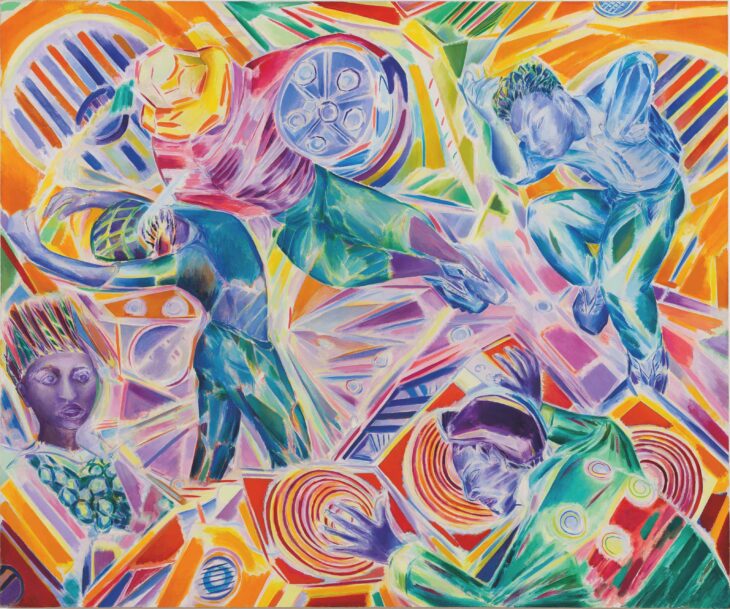
All Hands on Deck (2003), Denzil Forrester. Courtesy the artist and Stephen Friedman Gallery, London; © Denzil Forrester
This, then, became his process for generating drawings, in numerous nightclubs across east London – he cites a litany of venues which occupied faded, once-grand Victorian buildings in Hackney: Phebes; the Four Aces; All Nations, which had a restaurant serving West Indian food and domino games in the basement. Forrester would typically position himself behind the bar, watching the dancers and surging crowds and DJs – often his favourite, Jah Shaka – spinning records, sketching as best he could in the smoky near-darkness. Each drawing he made was done in the time a single song played. ‘I only had about three or four minutes to draw a section of the club, so I had to work very quickly, but I got very good at it. I did it for about five, six years, going to the nightclubs two nights a week, four or five hours a night. It became almost addictive. You’re there, drawing, being part of the crowd – it was a physical thing. You absorb a lot of stuff you’re probably not conscious of, but when you come to make the painting it all comes out, the physical presence of being in a space like that.’
Forrester’s nightclub paintings, worked up from his repertoire of thousands of drawings, are all about that sense of physical engagement, of entanglement almost, that feeling of losing yourself within the swirl of music and dancing bodies. His early works, such as Dub Skank (1979), are brighter and fizzier, then his colours over time become more darkly luminous – but the dizzying, lurching perspectives remain throughout, the dynamic poses, the strange distortions caused by drawing in darkness. Forrester tells me that while most of his tutors and peers at art school – first the Central School of Art, then the Royal College of Art – were motivated by Abstract Expressionism, he looked further back to painters such as Van Gogh, Matisse and Picasso, as well as to German Expressionists such as Max Beckmann and Otto Dix. And you can see this influence in the angular, prismatic look of his figures, as if they’re being somehow refracted by the clubs’ lighting effects, fragmented by the scissoring strobe beams.
The real spur, though, to developing his own style came in 1983 after he had graduated, when he embarked on a two-year residency at the British School at Rome. ‘I would come back to London every few months and go to the nightclubs,’ he says, ‘and make more drawings. But it was good being away from London, in my massive studio in Rome: it helped bring the paintings out more. When you’re away from your subject – a subject matter like London nightclubs and the place that feeds you – it brings it out stronger because you’re missing it, you’re longing for it.’
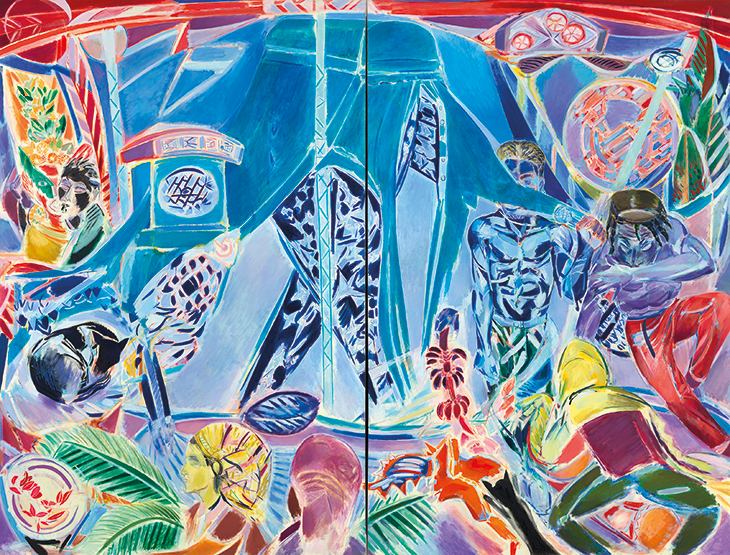
Blue Tent (1984), Denzil Forrester. Courtesy the artist and Stephen Friedman Gallery, London; © Denzil Forrester
So the breakthrough period for the nightclub paintings, when he produced pieces such as Carnival Dub and Blue Tent (both 1984), actually stems from feelings of distance and dislocation? ‘Yes,’ he says, ‘it’s interesting…’ He thinks for a moment. ‘You know, when I was a kid in Grenada, Carnival was really the main thing every year – it’s like a week of rave. I’m from this small village, and of course each village has their own little Carnival group – there were dancers, there were musicians: they used to meet to practice all their songs, the new steel-band tunes. I was too young to take part, but…’ His voice trails off again. ‘And Carnival of course is all over the West Indies, it’s part of your DNA if you’re from there. So when I went to these nightclubs, I think a lot of what connected people there was that sense of longing for something. Because if you’re living in a city, just thrown in there really, there isn’t much of you, your background or whatever; but the clubs gave people a sense of their history. It’s an exciting part of your life, because there isn’t anything else, anything tangible – like when I was a kid, going round all the big museums in London, I couldn’t see anything to do with my identity there. But in the clubs you realise, it’s in the music and the sound that people make – it gives you that feeling of belonging. I’m bloody crying now,’ he says, dabbing his eyes.
Forrester’s exploration into notions of belonging and history has taken a new direction in recent years. Although he continues to produce nightclub paintings – his current retrospective, ‘Itchin & Scratchin’, which first opened at Nottingham Contemporary and is now on show at Spike Island in Bristol (until 17 January 2021), includes works depicting dancehalls in Jamaica, made after a visit to the birthplace of reggae in 2019 – in other pieces he takes a more directly autobiographical turn, representing childhood scenes from memory. Reading with Ma Pets (2018) fondly evokes his relationship with a local schoolteacher in his village in Grenada, a woman who together with her husband essentially adopted Forrester. This was when he was around three or four, he explains, after his mother had fled the country for a new life in Britain (although he doesn’t mention it, he’s stated elsewhere that his father was abusive). Stitch Up (2017), meanwhile, describes the period after he and his brothers had followed their mother to Stoke Newington in north-east London. ‘My mum used to work for a small Jewish company making bags – shopping bags before plastic bags came in the ’70s – and I used to help on the sewing machine. So that’s why I call it Stitch Up – because I was stitched up in the bloody basement for four years making bags! I’d go to school during the day and come home at about four o’clock and we’d make bags until ten at night. I mean, it was a good industry, it made good money; but in retrospect it wasn’t very good for my education.’
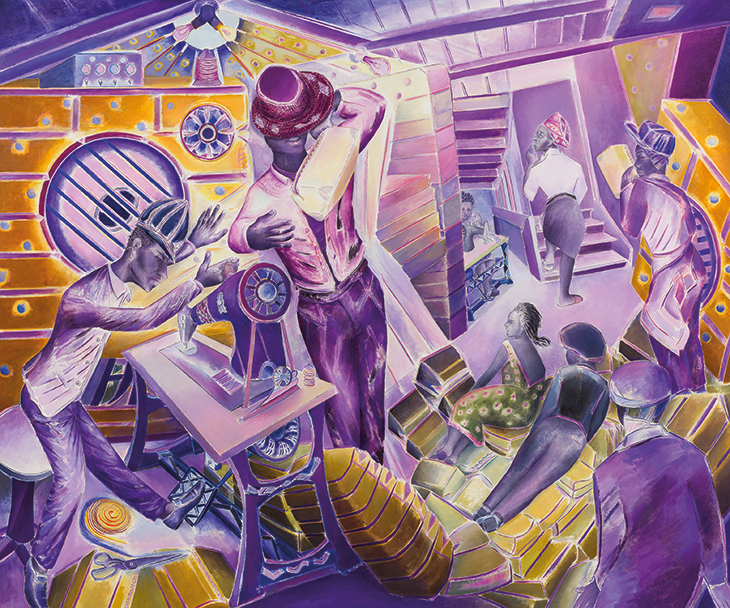
Stitch Up (2017), Denzil Forrester. Courtesy the artist and Stephen Friedman Gallery, London; © Denzil Forrester
It’s notable that even in a work like Stitch Up there are nods to his nightclub paintings. The basement lightbulb emits rays like a mirror ball and the figure of Forrester is dynamically positioned at the sewing machine like a DJ at a turntable. And the poses of other figures – Forrester’s brothers who weren’t involved in the actual sewing but helped in other ways – are reminiscent of clubbers. In fact, if you examine Forrester’s paintings across the years, it’s obvious that some figures are literally repeated – a particular character or posture he once drew, that he ends up using multiple times – so that the final works are amalgams, never literal depictions. The figures of policemen, for instance, standing by banks of speakers on the edge of the dance floor in Domino Hunters (1985) and Night Shift (2019) derive originally from sketches made at Notting Hill Carnival, he tells me. Sometimes he revisits a previous painting and repeats the entire scene, generating an alternate version of the same basic image.
Forrester likens his approach to dub music, with its culture of remixes, in which the structure of a song is kept but produced with different sounds and effects. ‘You can do all sorts with a good record, and it’s the same thing with painting. It’s quite exciting when you’re doing a painting you’ve done three or four times before.’ His most remixed piece, in that sense, is Three Wicked Men (1982), made while he was a student at the Royal College of Art. Taking its title from a song by Reggae George about a politician, a policeman and a businessman, the painting depicts a dreamlike street scene, full of characters pulled from all sorts of different drawings, while in the foreground is a modified trio: a Rastafarian figure being escorted by two policemen. Forrester explains how this central image derives from a cartoon he came across by his brother, in which the Rasta was carrying a briefcase – a drug dealer, Forrester presumed, who after all is a type of businessman. In Forrester’s painting, the Rasta’s briefcase has been replaced with a boombox, further complicating the reading, and creating an ambiguous, multilayered statement about tensions between the Afro-Caribbean community and the police. Over the years Forrester has reinterpreted the image multiple times, most strikingly in two recent pieces – the moody, nocturnal Brixton Blue (2018), a public commission by Art on the Underground for Brixton tube station; and From Trench Town to Porthtowan (2017), which superimposes the trio of figures against the incongruous backdrop of a sunny, crowded beach near Truro, Cornwall (it was the first work Forrester made after he moved there from London in 2016). The original Three Wicked Men, meanwhile, is now part of the Tate collection, having been purchased and then donated by none other than Peter Doig – who has a claim to be Forrester’s most ardent and influential fan.
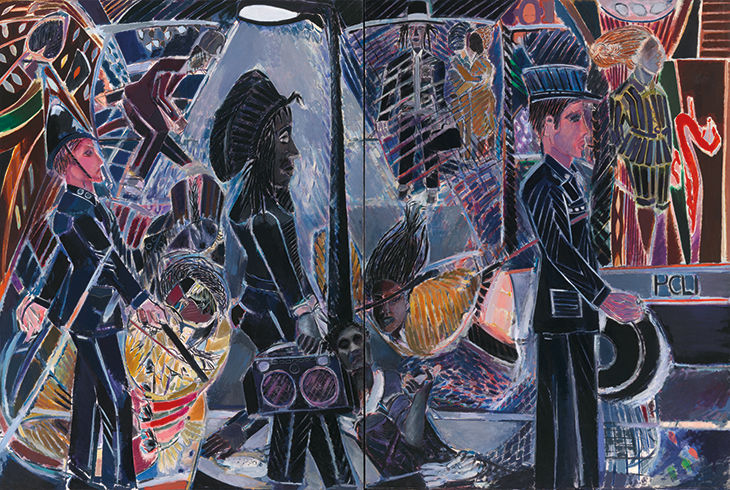
Three Wicked Men (1982), Denzil Forrester. Tate, London. © Denzil Forrester
Certainly, no account of Forrester’s late-career renaissance would be complete without mentioning the support of the Turner Prize-nominated, auction record-breaking painter. Doig was an art student in London at the same time as Forrester, though they never met, and Forrester still seems faintly astonished as he describes how Doig tracked him down, out of the blue, in 2015. ‘He said, “I saw your work in the ’80s, I saw your degree show,” and he remembered it so well. He kept on seeing my work here and there, every four or five years. So it had been about 35 years that he’d been following my work until he managed to contact me. That’s incredible, I think.’ Doig took Forrester under his wing, helping to set up shows in London and New York and co-curating an exhibition in Cornwall, kick-starting a surge of interest; within a few years Forrester found himself with gallery representation for the first time in his life as well as his current retrospective.
Not that Forrester had been languishing in obscurity prior to this, exactly. For many years he had been teaching painting and drawing at Morley College, an adult education college in south London; he helped run an art space in Islington; he participated in significant group shows in UK galleries throughout the ’80s and ’90s. But if he’d been relatively neglected by the mainstream art community in recent decades, he’s now finally garnering the critical and commercial attention his work deserves. Partly, that’s due to individual supporters like Doig, as well as changes within the art world – the championing of artists of colour; the return of figurative, narrative painting. More significantly, it’s because Forrester’s work addresses head-on a set of concerns that feel very current – about social and political injustice, about the formation or dissolution of bonds of community. Specifically, the cycle of angry, mournful works he made in the ’80s about his friend Winston Rose, who was unlawfully killed by police, cannot but resonate with the contemporary moment.
‘Winston Rose was someone I grew up with,’ Forrester explains. ‘He was a bit older than me. His family lived in the same house mine did, in Stokey [Stoke Newington], for about five years. I left home, went to art school – I didn’t know anything about him any more, his parents had moved as well. This was 1981. I was watching television, when he came up on the local news: died in police custody. I just thought, “Oh, Winston.”’
For the next decade, alongside his nightclub pieces, Forrester made drawings and paintings of Rose – the Rasta figure in Three Wicked Men is actually an early depiction – as a way of envisioning the horror of his friend’s death, giving form to his outrage and grief. ‘I did a scene in the police van quite a lot. Because the police killed him in his back garden. Then four of them carried him to the van, chucked him in face down, sat down on either side with the body on the floor… I mean, it’s just horrible. So, I thought, “I must do a painting of it.” But that one was tough to do.’
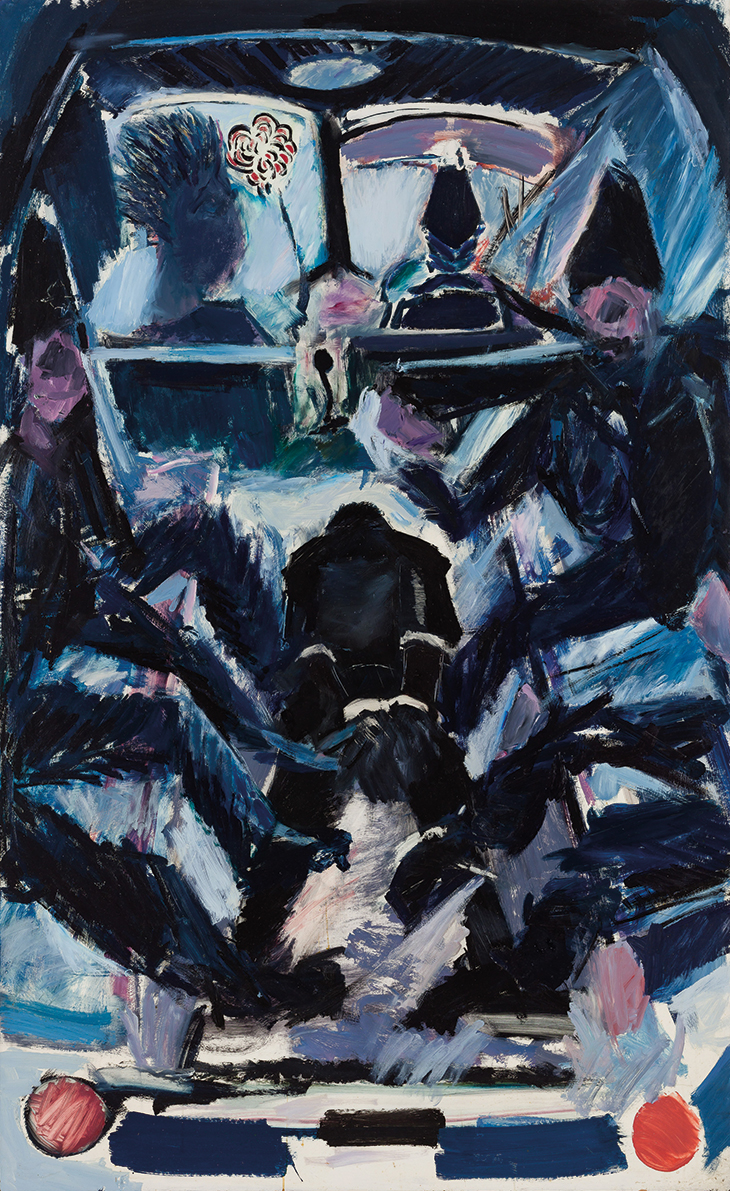
Deado 2 (1982), Denzil Forrester. Courtesy the artist and Stephen Friedman Gallery, London; © Denzil Forrester
I bring up the Black Lives Matter protests that have rocked the United States – the trigger for which, the killing of George Floyd in Minneapolis, was due, like Rose’s death, to the police’s brutal use of chokeholds. And just a few days before Forrester and I speak, Jacob Blake was shot by police seven times in the back in Kenosha, Wisconsin. Forrester’s response is stark, even pessimistic: ‘Life doesn’t change a lot, it keeps repeating itself: what’s happening in America is the same as ages ago when they hanged Black people.’ But it’s a pessimism born from experience – the experience of having a friend unlawfully killed by the very persons who are meant to enforce the law, of hearing countless stories about police arresting people in the Afro-Caribbean community and beating them up, of being in nightclubs that the police would raid for no other reason except to intimidate and harass. ‘Stokey police – they are so bloody corrupt,’ he says, bitterly.
But perhaps pessimism isn’t quite the right term – realism might be a better word to describe Forrester’s attitude, his determination to act as a witness, to channel the real world through his art. I mention Spike Island in Bristol, the current venue for his retrospective, and he remarks how he would have loved to have been in the city when the statue of Edward Colston was torn down in June: ‘I would have gone down to the docks, because there was a crowd. That’s what I do, I draw crowds. The drama and the action of taking the statue down and dragging it all the way to the sea – that would have been lovely to draw.’ His works are a kind of visual testimony – not to demonstrate how things factually looked, they’re not realist in that sense; but how things felt, the lived experience of a moment. ‘It’s to do with emotion, you’re trying to bring up your raw feeling about something.’
Ultimately, Forrester’s philosophy seems to be that the good and the bad in life go hand-in-hand. ‘That’s why it was so important, going to those nightclubs; if I hadn’t gone, I would never have made the police works,’ he says. ‘If you’re painting locals, your community, people from your background, then you have no choice but to tell it like it is. You can be true to yourself and just paint, because it’s all in there. You just have to give yourself over to it. You don’t have to invent anything, it’s all around you.’
Spike Island, Bristol, is temporarily closed to the public due to Covid-19 restrictions. For more information on ‘Denzil Forrester: Itchin & Scratchin’ (scheduled to run until 17 January 2021) visit the institution’s website.
From the November 2020 issue of Apollo. Preview and subscribe here.
Unlimited access from just $16 every 3 months
Subscribe to get unlimited and exclusive access to the top art stories, interviews and exhibition reviews.

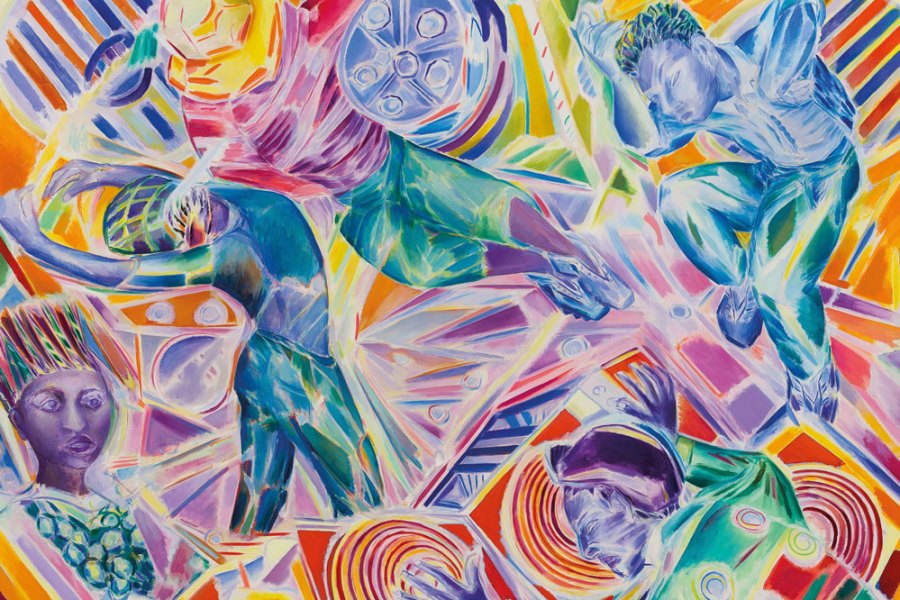
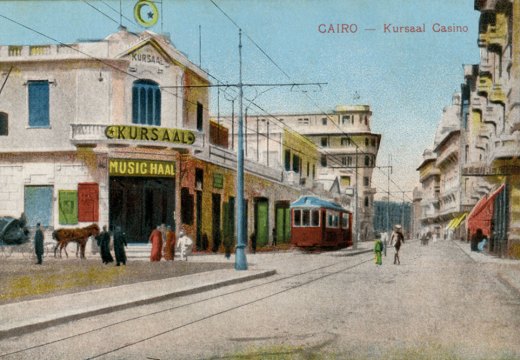
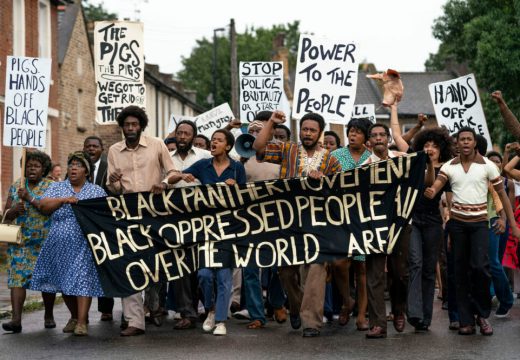
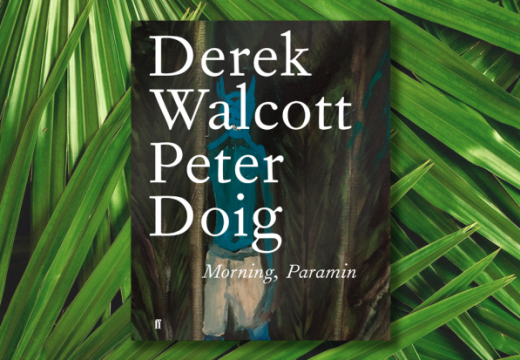









![Masterpiece [Re]discovery 2022. Photo: Ben Fisher Photography, courtesy of Masterpiece London](http://www.apollo-magazine.com/wp-content/uploads/2022/07/MPL2022_4263.jpg)
It’s time for the government of London to return to its rightful home